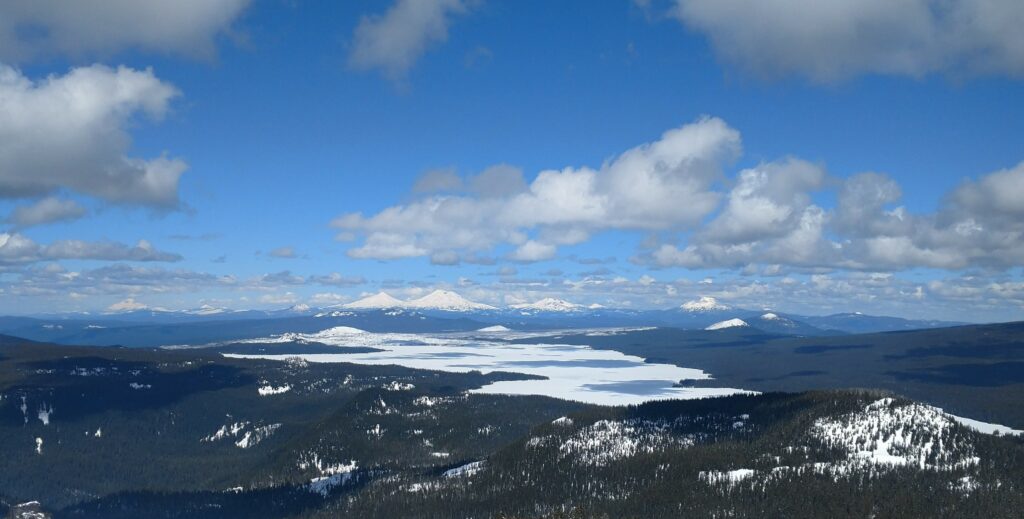
Finally, after several years of just thinking about it, I got around to climbing Fuji Mountain in the snow — the one in Oregon, not the one in Japan (maybe one day). On March 30, 2019, the weather forecast was almost perfect for this trip, and I realized that there weren’t any reasons not to go. The summary: it took all day, and 17 miles through every kind of snow one can imagine (and some I hadn’t prior to this trip).
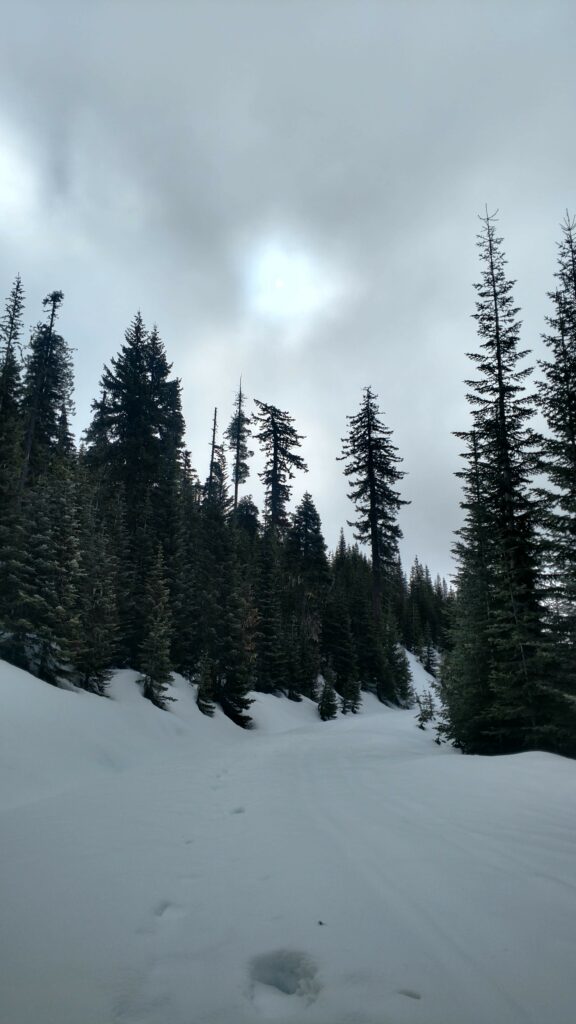
The day began a tad ominously, with some low clouds making for a somewhat gloomy climb on Fuji Mountain Rd. The forest service road started out with no snow, then a couple of feet, then over 6 feet in the first hundred yards. Even though it was fairly early in the morning and not sunny yet, the snow had seen a lot of temperature swings recently, which had built up its appetite for snowshoes. So every now and then, I’d posthole suddenly, down to the knee or more, snowshoe and all. At first I thought I had maybe gained weight since the last time I snowshoed, but my pants still fit, so I decided that was unlikely. Instead, the snow was a bit like Tiramisu (or any other cake, but I like Tiramisu the most), with intermittent creamy layers of softness under the harder crust, but minus the yummy coffee flavor and with the questionable bonus possibility of broken ankles.
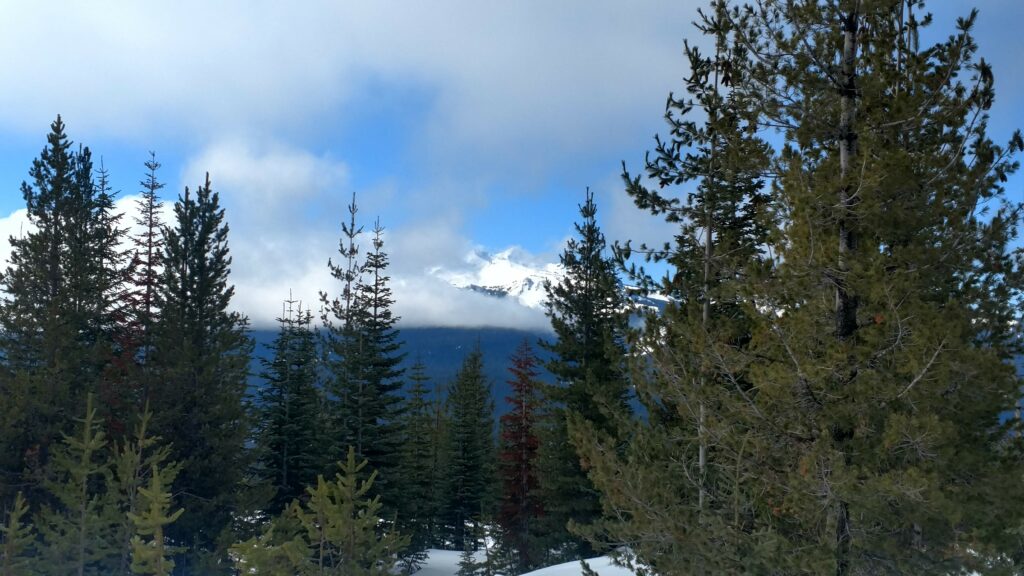
About 1.5 miles up the road, some views to the right offer glimpses of Diamond Peak. Just up the hill on the left side of the road one can find several lunch spots for people who leave at a less ungodly time and therefore arrive there at noon or so instead of 9:10, as I did.
The plan for the day involved starting on the Fuji Mountain Rd toward Fuji shelter, but then taking the summer trail toward Fuji and bypassing the shelter for a more reasonable 11-mile trip. The latter half would be unmarked, but the terrain at a higher altitude makes navigation fairly easy. Unfortunately, when I got to the trail, I discovered that under 6-8 feet of snow, the “trail” was going through the middle bushy parts of the dense young forest filling the gaps between bigger trees. The process of moving through those was much like what shoes go through when cleaned by those rotating brush devices, except I am not a shoe and had to do this for at least a mile while climbing a rather steep slope and navigating (because other than the junction, the summer trail is just an abstract idea on a map in winter). So, at that point, I switched to plan B, which had been there lurking in the background like a bad smell all along, but I was very much hoping not to have to do it, as it added several miles to an already long day.
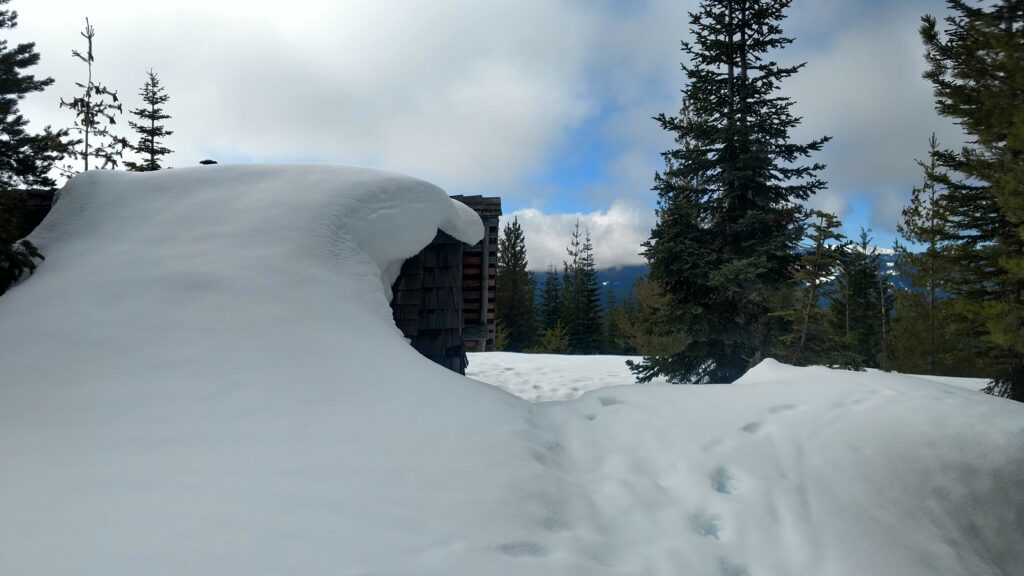
At almost 4 miles, the trail to the shelter split to the left, and a short while later, I reached the lump of snow containing the shelter.
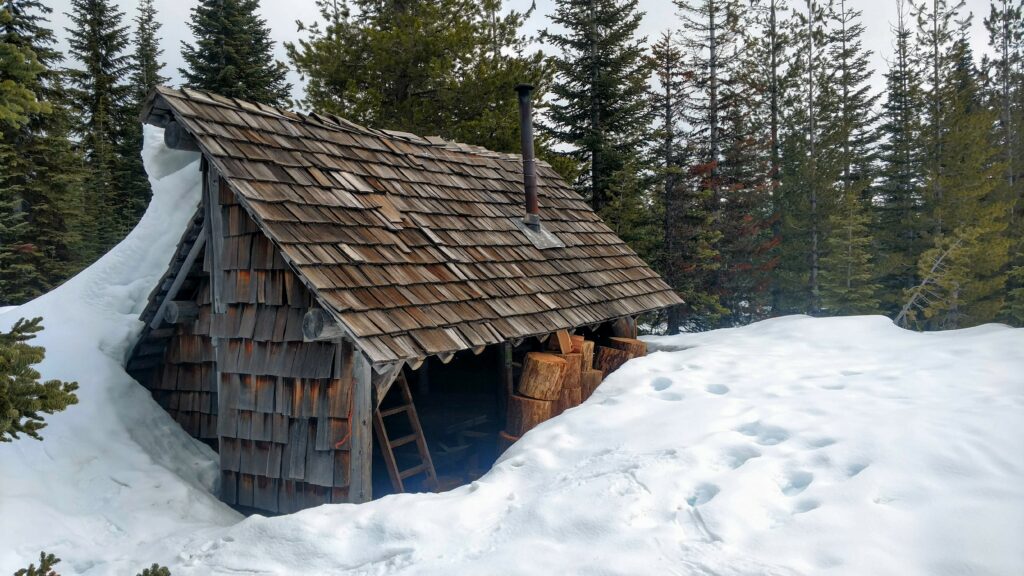
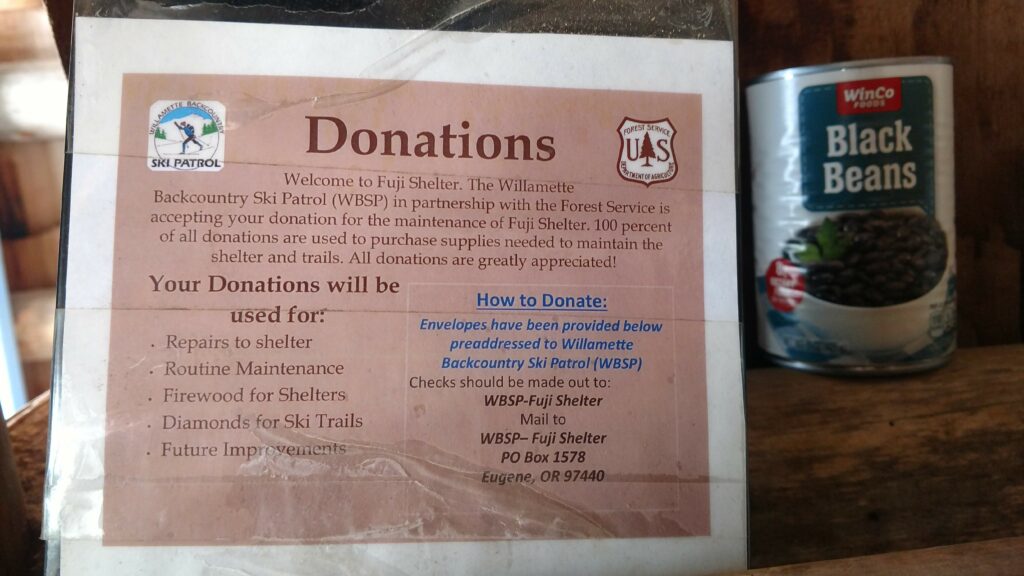
As this was my planned snack stop, I climbed down into it and proceeded to have the snack while peeking over the snow wall at Diamond Peak. The inside of the shelter contained a lot more things than the last time I was there, including a sleeping bag, tarp, some food, minibar, and a really nice looking axe.
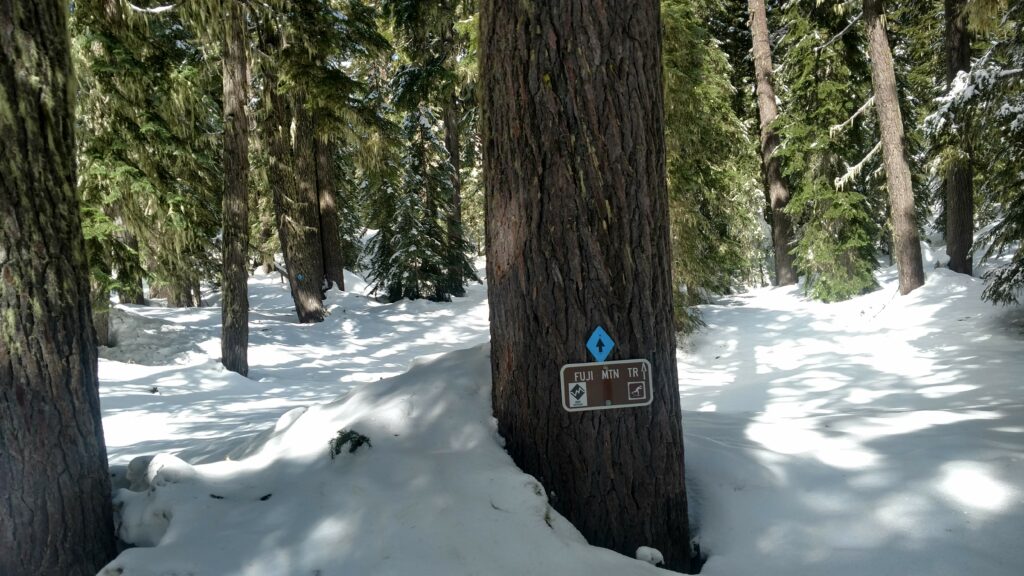
After this short break, I headed back to the last trail junction a few steps away and proceeded on the path to the Birthday Lakes, and a bit later, splitting off to the Fuji Mountain trail, which at this point has the benefit of nordic markings, some of which were even above the snow. The sun came out and mostly stayed out the rest of the day, which was nice (except for what it did to the road, but more on that later).
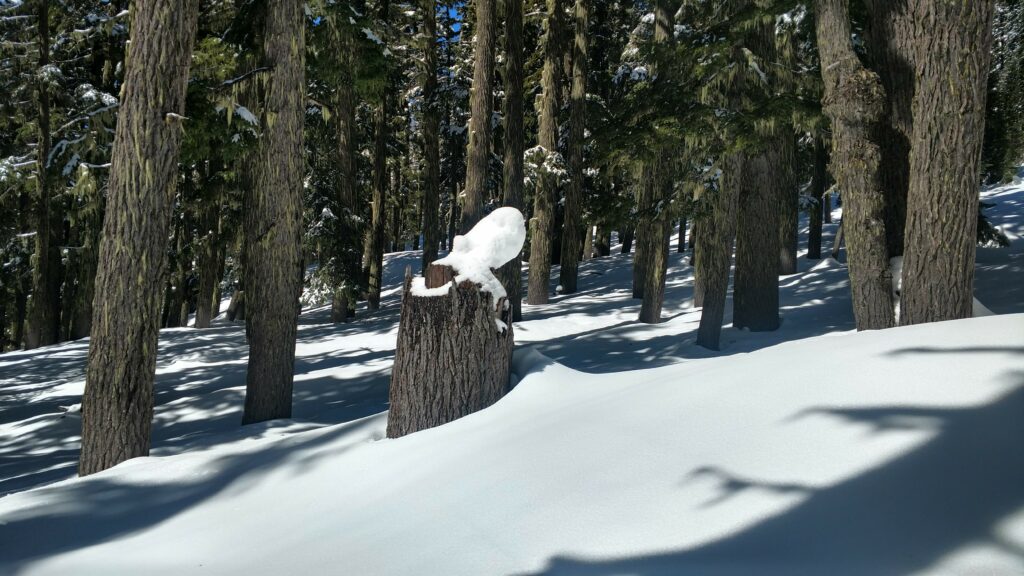
The hike up through the woods was fairly easy and pleasant at this time of day, with some fresh snow on top of harder layers. The markings were also quite good for a couple of miles, making this perhaps the easiest and most relaxing part of the trip.
A couple of miles from the shelter, the markings became less reliable (i.e., missing), so I followed the tracks of a nice coyote for some time until encountering more nordic markings and eventually joining with the Fuji Mountain trail. Following that is fairly easy since the winter and summer routes overlap.
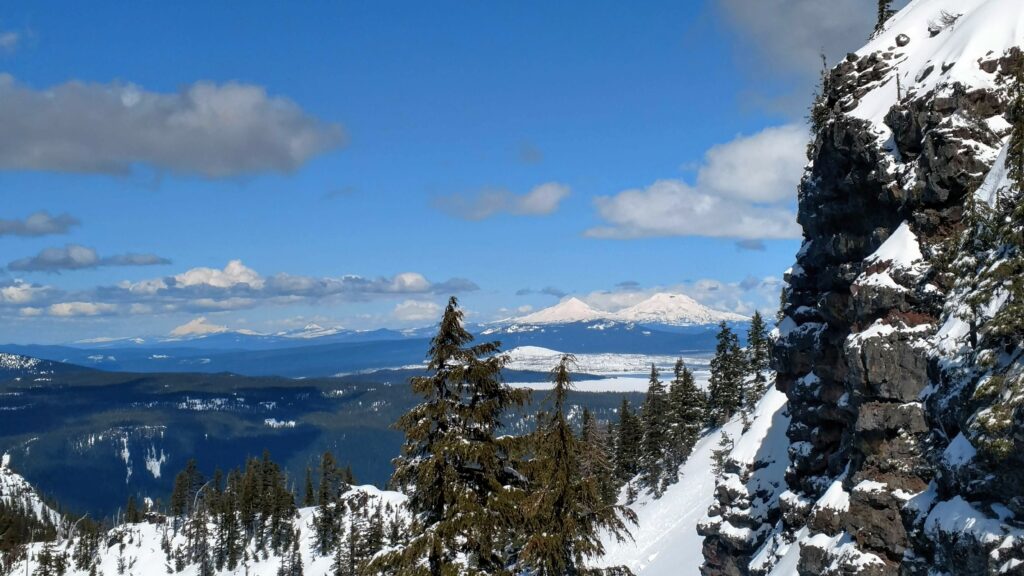
After enjoying a peek to the north, I was motivated to tackle the last portion of the climb, which was the most frustrating by far. Following the ridgeline was not a good option since there are several vertical spots like the one above, so I had to traverse a very steep slope. The other frustrating bit is that Fuji has trees pretty much all the way up, so you can’t just look up, see the summit, and go to it, so navigation was needed until the very end (lots of tiny false peaks to avoid). So both Gaia GPS and I got quite a workout in the last third of a mile. Then, after the final steep slog, I popped out on the gentle snow-covered mound that is Fuji Mountain in the winter.
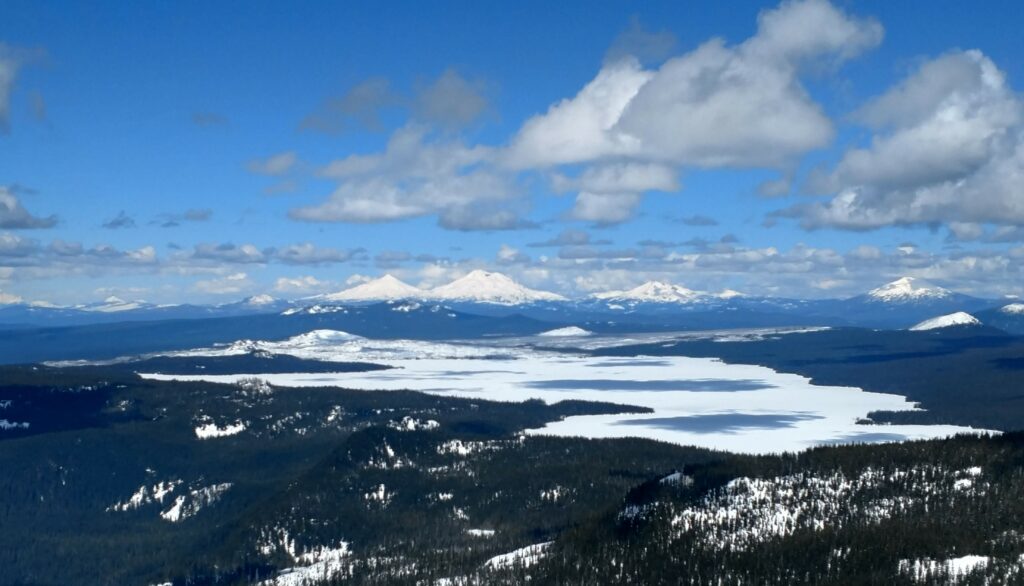
The 360 views on top were more spectacular than my already high expectations, and I had my lunch while slowly rotating on my pad so that I could take it all in. The north was definitely the most dramatic, but all directions had something interesting in them. I am still amazed that a giant lake like Waldo can freeze; it’s hard to imagine that not so long ago we were happily swimming there!
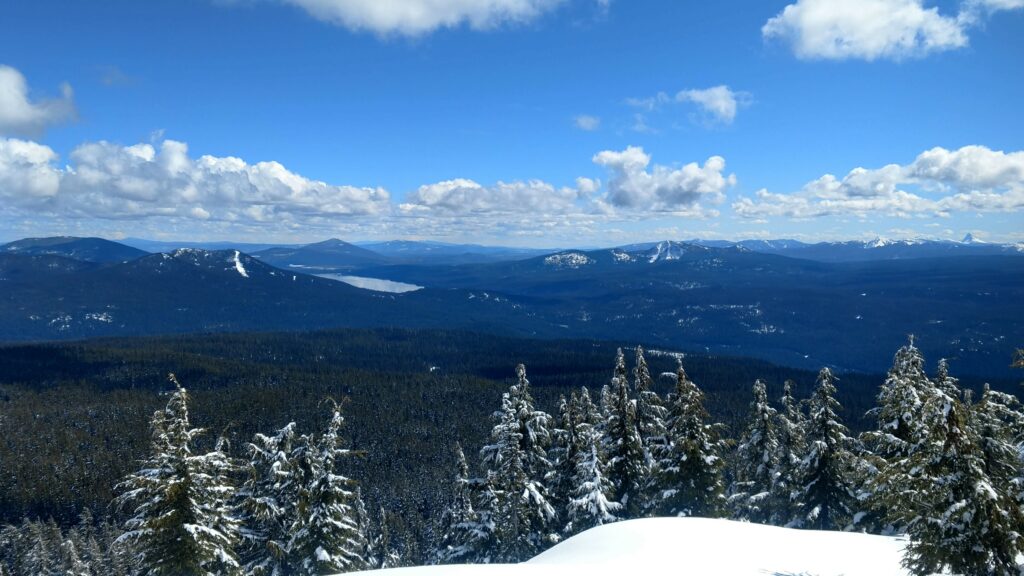
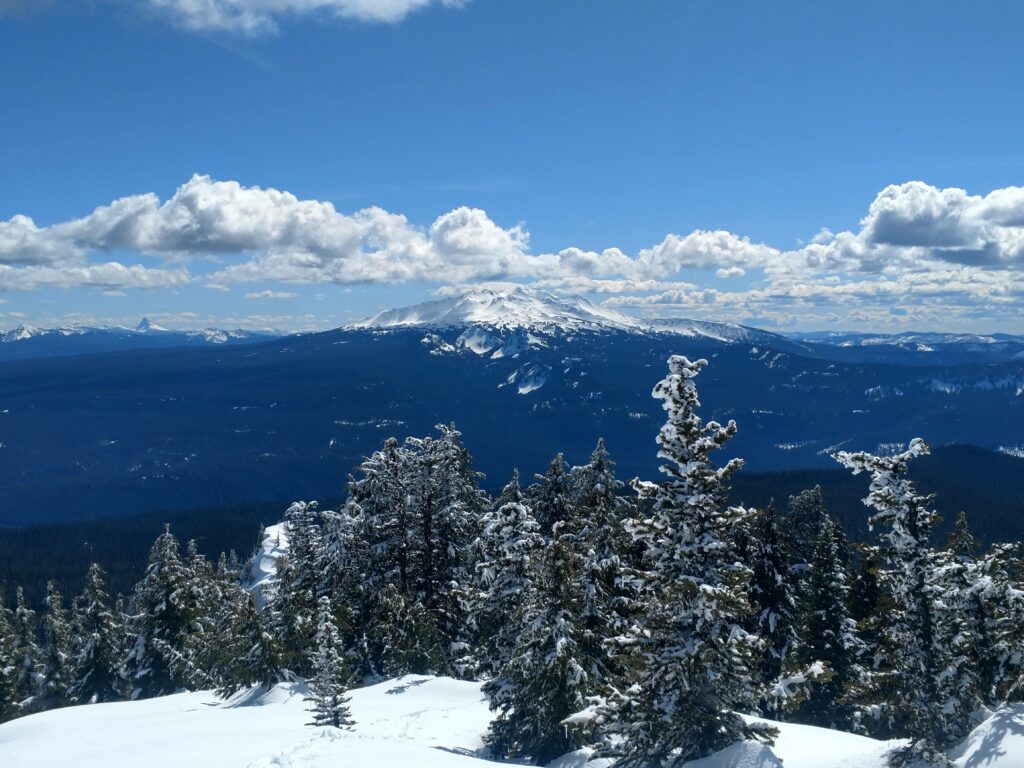
I spent as long as reasonable on top, knowing that I had over 8 miles to go, mostly downhill, but with nontrivial little climbs along the way. But it’s easy to go back the same way, I thought, naively — I’ve seen it all, so no surprises, right? Right.
It shouldn’t have been a surprise, but nevertheless, it was, that the snow had changed completely from the morning. So all the sunny or formerly sunny spots were now completely unpredictable — some were nice and firm, others were slush, and yet others — completely firm-looking, but causing random post-holing, snowshoe and all. The relatively shaded woods were not quite as bad as the road after the shelter. It was so very horrible that I seriously considered: (1) waiting until dark and some freezing, or (2) just calling it a night at the shelter (I was equipped for a day trip only, but recall that the shelter had a donated sleeping bag and tarp). The misery of post-holing for almost 4 miles was indescribable, but once I was committed to getting back before sunset, there was no going back.
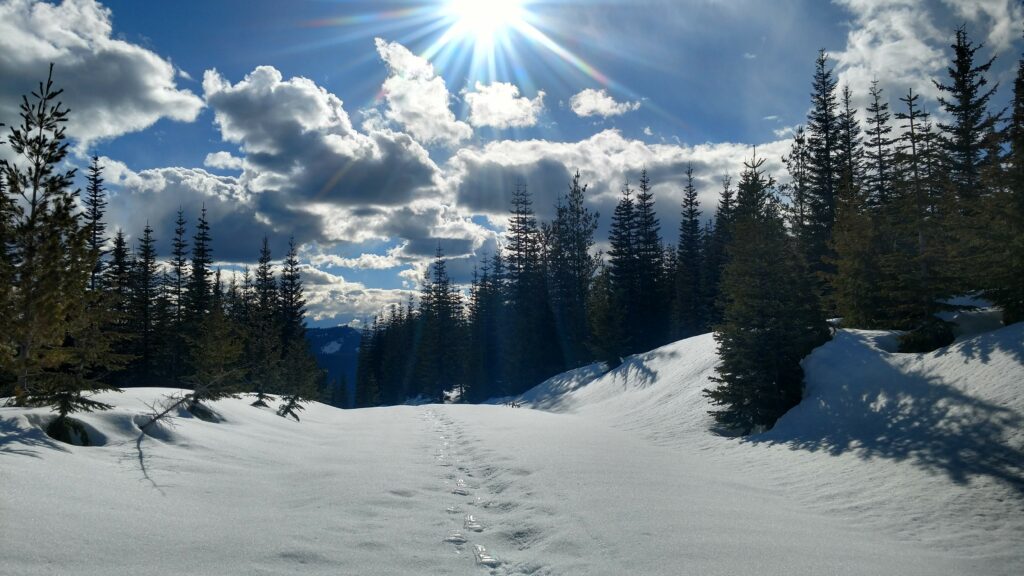
In previous snowshoeing treks during proper winter, I had no trouble getting down from the shelter in about an hour. This time, I was closer to
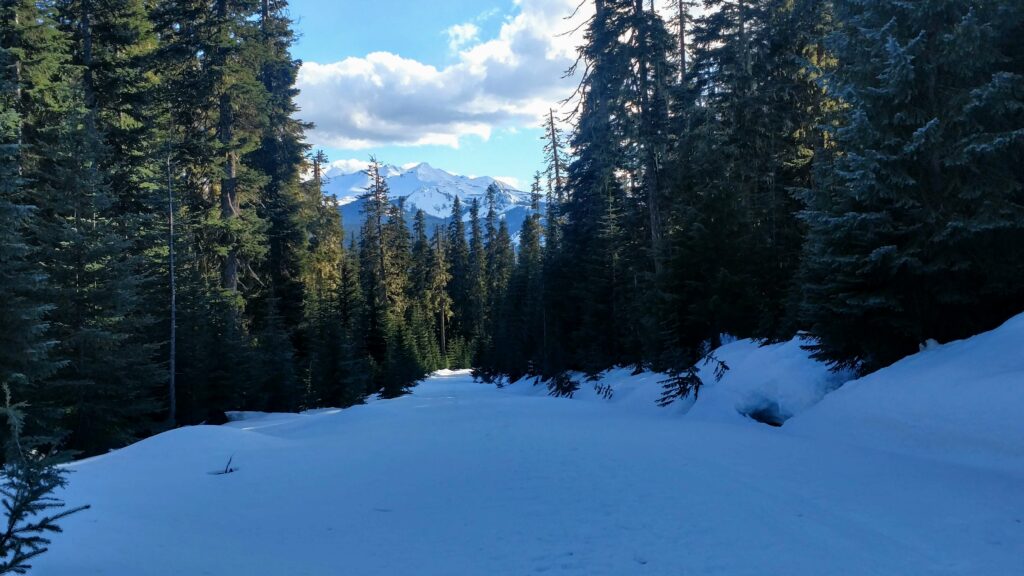
Anyway, despite the awful last few miles, this trip was truly a fantastic experience. I don’t think I’ll try it again without skis for the descent, but in other ways, it all worked out perfectly. One day, 17 miles, no humans, and life-long memories — I couldn’t ask for more!